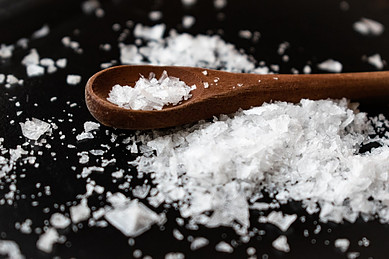Exceptionally, due to the insufficient amount of sugar in the must and the associated alcohol level adding sugar to wine must is allowed. What are sugars, how are they formed, when are they allowed to be added, and how do we properly dose the required amount?
Sugar molecules are made up of carbon, hydrogen, and oxygen – just three chemical elements, but there is a wide range of different and very complex sugars.
The basic building blocks of sugars are called monosaccharides (also called simple sugars, simple molecules); examples of such sugars are glucose (grape sugar) and fructose (fruit sugar) – sugars that are mostly present in grapes. Simple sugars combine to form di-saccharides from two such molecules. Glucose and fructose thus form the disaccharide sucrose (cane or beet sugar, which is also used in households). The chain goes on to form polysaccharides, such as, e.g., starch, but the vine does not produce these.
Sugars Are Formed in the Green Section of the Vine

Sugars are formed in the green parts of the vine, namely from carbon dioxide; the vine of the latter draws from air and water through leaves and roots. The phenomenon of assimilation occurs because light acts on the chlorophyll in the leaves. Sugar travels to the grape berry and accumulates there. In ripe grapes, glucose and fructose are approximately equally represented in terms of proportion, while in must from overripe grapes (noble mold), fructose predominates. Both sugars during the alcoholic fermentation of must return to ethanol or—alcohol and carbon dioxide with the help of yeasts. Sucrose is also present in a small proportion of the grapes, but yeasts are not able to return it to ethyl alcohol. Nature has also taken care of this because the enzyme sucrose, which is produced by yeast and is present in the must, allows the sucrose molecule to break down into glucose and fructose, which in turn boils down to alcohol.
With the subsequent addition of sucrose (sweetening process), we add sugar, which is not present in a substantial proportion in naturally obtained must but is converted into the simple grape and cane sugar using a biocatalytic reaction made possible by the enzymes present in the must.
Adding Sugar to Wine Must Is Allowed Only Exceptionally
The addition of sugar into must is an undesirable process in the technological chain of wine production and is allowed only exceptionally. If the grapes are ripe enough and no alcohol correction is needed, this is at the same time a guarantee that our wine will also be balanced with acids and rich in other desired substances! So let’s do more towards the practice of “adding” sugar already in the vineyard – with the appropriate load on the vines and the date of harvest! Unfortunately, weather conditions or “forced” early harvests (e.g., due to hail) sometimes dictate a different practice as well.
Adding Sugar to Wine Must Because of Alcohol Level Correction
If a correction of the alcohol level is required, it is carried out with the addition of sugar during boiling. Following the “Rules on the conditions to be met by grapes for processing into wine,” sugar in the following forms may be used to correct the alcoholic strength: sucrose, concentrated grape juice, or rectified concentrated grape juice so that for table wines, the volume fraction increases by a maximum of 2%. Top-quality wines are not allowed to be sweetened.
Excessive correction of the alcohol level can achieve a negative effect! Wine from unripe grapes, coarsely sour and modest in the composition of aromatic substances but at the same time with high alcohol content, would act spicy, disharmonious, and unnatural.
An essential task before correcting the alcohol level is to determine the sugar concentration with a refractometer. Pay attention to the appropriate temperature of the liquid and follow the instructions for use!
Necessary Quantity and Addition of Sugar
To increase the 1 Oe level, add 0.25 kg of sugar per hl of wine must (with 1 kg of sugar/hl, increase the sugar level by 4 Oe, which is about 0.6 vol.% Alcohol after boiling). In other words, to raise 1 vol. % alcohol requires the addition of approximately 1.7 kg of sugar/hl (sucrose). Dissolve the sugar before adding or homogenizing in the heated must liquid.
Adding sugar to wine must also slightly increases the volume of the must.
